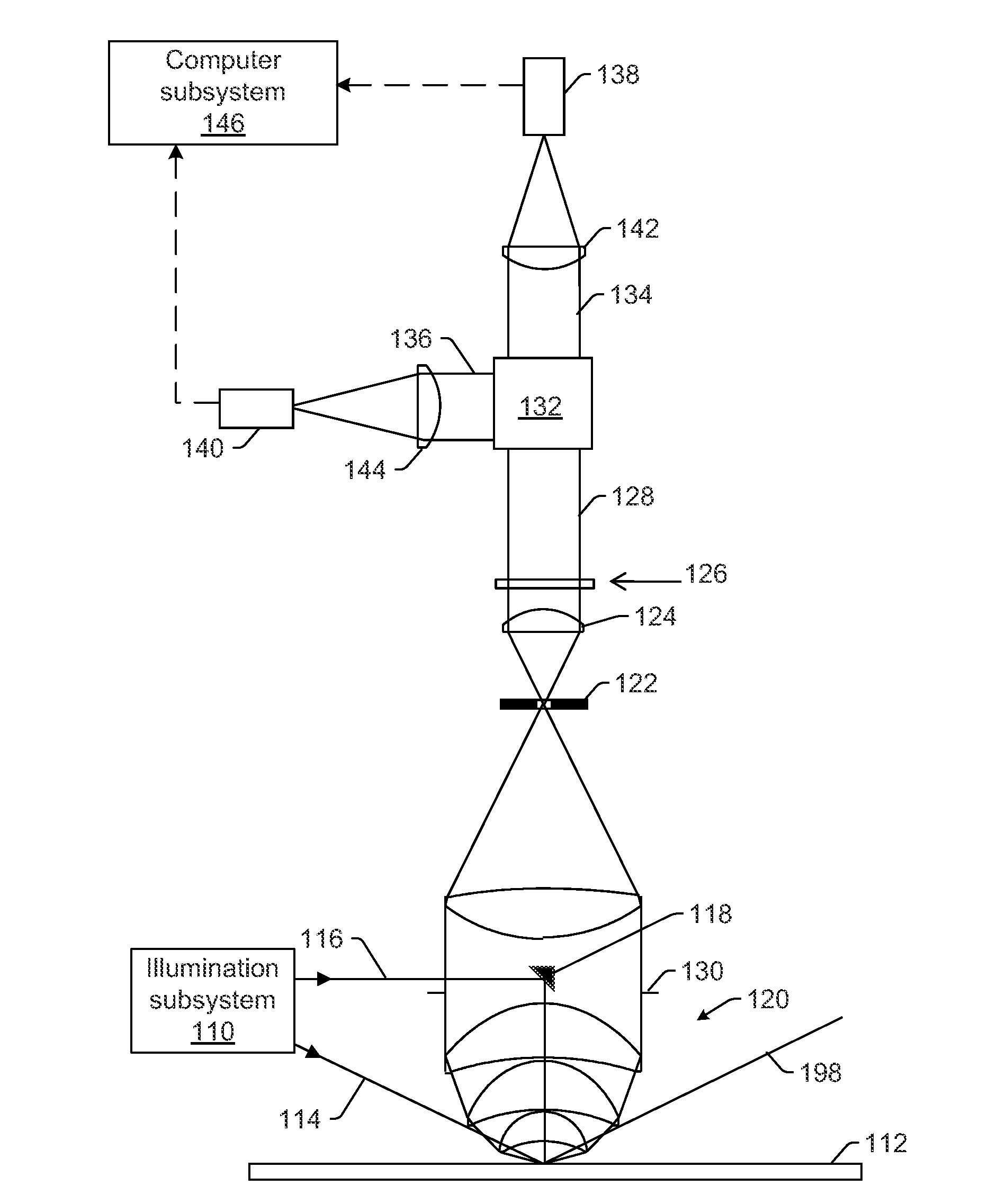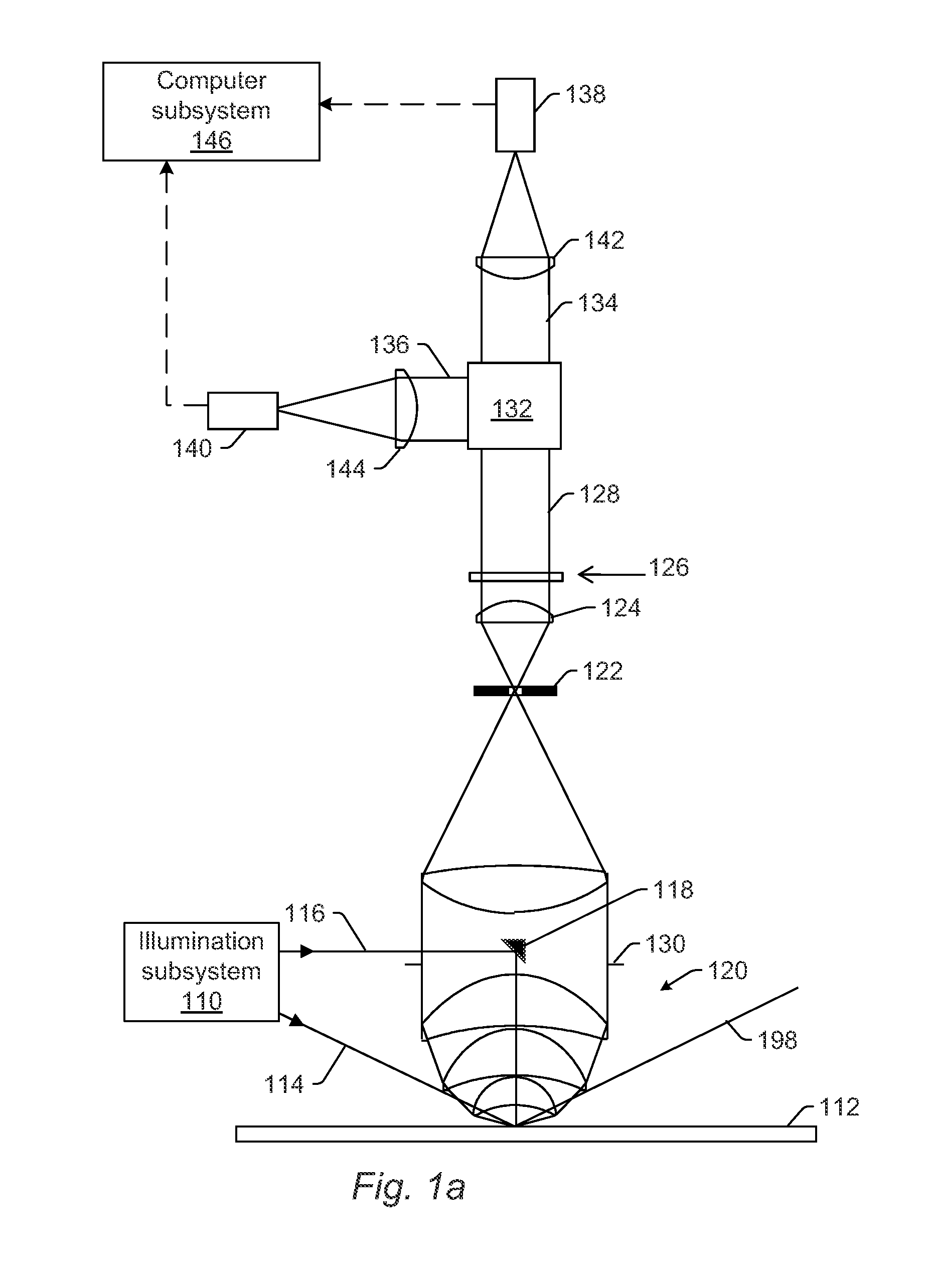Wafer Inspection
a technology of water filter and water filter, which is applied in the direction of optical radiation measurement, semiconductor/solid-state device testing/measurement, instruments, etc., can solve the problems of difficult reconfiguration to optimize the system for different samples and defects, and the segmentation of the na is fixed, so as to minimize the detection of scattering, maximize collection and detection of scattering, and minimize the effect of particle detection
- Summary
- Abstract
- Description
- Claims
- Application Information
AI Technical Summary
Benefits of technology
Problems solved by technology
Method used
Image
Examples
Embodiment Construction
[0038]Turning now to the drawings, it is noted that the figures are not drawn to scale. In particular, the scale of some of the elements of the figures is greatly exaggerated to emphasize characteristics of the elements. It is also noted that the figures are not drawn to the same scale. Elements shown in more than one figure that may be similarly configured have been indicated using the same reference numerals.
[0039]FIG. 1a illustrates one embodiment of a system configured to inspect a wafer. The system includes an illumination subsystem configured to illuminate the wafer. For example, illumination subsystem 110 may be configured to illuminate wafer 112 by directing oblique illumination 114 to the wafer and / or normal illumination 116 to the wafer. For example, the illumination subsystem may include a number of optical elements such as reflective optical element 118 configured to direct light from one or more light sources (not shown) to the wafer at one or more desired angles of inc...
PUM
| Property | Measurement | Unit |
|---|---|---|
| wavelength | aaaaa | aaaaa |
| wavelength | aaaaa | aaaaa |
| wavelength | aaaaa | aaaaa |
Abstract
Description
Claims
Application Information
 Login to View More
Login to View More - R&D
- Intellectual Property
- Life Sciences
- Materials
- Tech Scout
- Unparalleled Data Quality
- Higher Quality Content
- 60% Fewer Hallucinations
Browse by: Latest US Patents, China's latest patents, Technical Efficacy Thesaurus, Application Domain, Technology Topic, Popular Technical Reports.
© 2025 PatSnap. All rights reserved.Legal|Privacy policy|Modern Slavery Act Transparency Statement|Sitemap|About US| Contact US: help@patsnap.com



